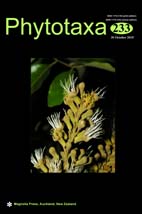Abstract
The taxa of Ranunculus section Batrachium (Ranunculaceae) have been variably and unsatisfactorily treated in North Europe. Since the description of Ranunculus schmalhausenii (Batrachium dichotomum), probably the most common species in the area, its taxonomic status and identity have been unclear and differently implied. In the majority of treatments, individuals of R. schmalhausenii were ascribed to R. peltatus but sometimes also to the other morphologically similar, heterophyllous taxa. Based on detailed morphological study combined with geographical, ecological and biological evaluation the separate species status of this taxon was finally evidenced. The additive ITS polymorphism pattern of R. schmalhausenii confirmed its hybridogenous origin, however identification of the parental species was impeded by the heterogeneous character of the polymorphism detected. Genetic variation expressed by R. schmalhausenii samples may provide evidence of its multiple origin and suggests sexual reproduction of the taxon. Analysis of a sequence variation of two noncoding cpDNA regions, namely psbE-petL and rpl32-trnL, showed that individuals of R. schmalhausenii inherited cpDNA from two lineages of Batrachium, indicating that this taxon was created at least in two separate hybridization events. Ranunculus schmalhausenii may have originated from sexual ancestral species as multiple created hybrids which have been stabilized by polyploidisation. Genetic structure of R. schmalhausenii is somehow similar to also hybridogenous R. penicillatus. In this study, a detailed morphological, geographical, ecological, and biological description of R. schmalhausenii was presented and the differences between this species and similar taxa were outlined. The name was lectotypified and its synonymy was provided. In contrast to many other heterophyllous species of Ranunculus section Batrachium, R. schmalhausenii occurs mainly in young, postglacial landscapes of Fennoscandia, prefering deep and clear waters with current or wave action and a hard bottom, which perfectly corresponds with a relict, postglacial nature of the species. The species probably presents an example of rapid hybrid speciation (less than 10 000 years) in postglacial environment of North Europe and may be considered as endemic to Fennoscandia. Moreover, R. schmalhausenii, as a weak competitor and pollution sensitive taxon, can be regarded as an indicator of clean waters. Phylogenetic relations within section Batrachium indicates convergent evolution of some species and two cases of possible cpDNA capture.

